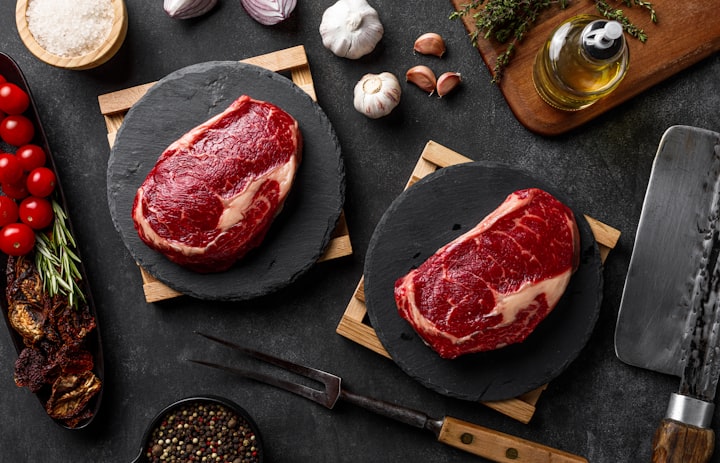Brown Rice Vs White Rice Nutrition Comparison
Which One Is Best? Find Out

Many people around the world eat rice as part of their diet. You can choose from many varieties of rice, and there are many ways to prepare it. Rice is delicious, nutritious, and versatile.
In the United States, rice is available in white and brown varieties. While both types of rice come from the exact grain, white rice is refined more thoroughly during processing. Whole grain rice is one type of brown rice.
Here's what you need to know about white rice's nutritional differences with brown rice, which rice is better for certain circumstances, and the benefits and considerations.
Brown Rice Vs White Rice
Brown rice is more similar to white rice than you might think. As a whole grain, brown rice differs from white rice, a slightly processed whole grain.
Like all whole grains, rice contains three integral components: the bran, the germ, and the endosperm. Bran and germ contain antioxidants, B vitamins, and fiber; the endosperm and bran are starchy carbohydrates and proteins. The germ and endosperm contain virtually no vitamins or minerals.
In contrast to white rice, which contains only the endosperm, brown rice is the whole grain version of rice, containing the bran, germ, and endosperm.
Brown Rice Vs White Rice Nutritional Comparison
Because bran and germ are both incredibly nutrient-dense, brown rice may seem like the best choice, but it is not that simple. Both forms of rice have benefited from a nutritional standpoint, so let's compare brown rice and white rice.
Nutrients
White rice contains more nutrients and minerals than brown rice. Brown rice contains more nutrients than white rice because of its bran and germ. It is richer in thiamine, niacin, magnesium, manganese, iron, and zinc than white rice, containing 790 % more thiamine. Even though white rice does have essential nutrients, there are only limited amounts since there are no bran or germ.
Anti- Nutrients
Despite its anti nutritional properties, brown rice does have bran and germ on the whole grain. Because the bran of brown rice is a protective layer, it contains an anti-nutrient known as phytates. Phytates help the grain survive until it is time for it to germinate.

This anti-nutrient may cause our bodies to have difficulty digesting and absorbing many of the minerals present in brown rice. Phytates bind with minerals in the body, such as zinc, magnesium, and calcium, preventing them from being absorbed.
Calories
One cup of long-grain brown rice is 248 calories, while 1 cup of long-grain white rice is 205 calories. Despite the slight difference in calories, the bran contains fat, a calorie-dense energy source, and extra protein.
Fat
A 1 cup serving of long-grain brown rice contains 2 grams of fat due to the presence of fatty acids in the bran, whereas a 1 cup serving of white rice contains only 0.4 grams.
Protein
Although brown rice isn't of great importance in terms of protein content, it does contain a slightly higher protein level than white rice, at 5.5 grams per serving, instead of 4.3 grams.
Fiber
The fiber-rich bran in brown rice makes it a great source of fiber, with 3.2 grams per cup, or 11% of your daily need, while bran-less white rice only contains 0.6 grams.
Carbohydrates
Long-grain brown rice contains 52 grams of carbohydrates per 1 cup serving, while long-grain white rice contains 45 grams per 1 cup serving.
Glycemic Index
Because brown rice contains a large amount of fiber and protein, it is often touted as the more nutritious choice due to its low glycemic index (GI), but studies suggest this is not the case.
Foods with a high GI score have a more significant impact on blood sugar; the higher the GI score, the more significant the impact on blood sugar.

Some research suggests that GI scores for brown rice and white rice are very close, and other study finds that the effects of grains (more so than brown or white rice) on blood sugar are not the same for different people.
- Nutritional Values
- White Rice
- Brown Rice
- Calories
- 130
- 112
- Carbs
- 29 Grams
- 24 Grams
- Fiber
- 0.2 Gram
- 2 Grams
- Protein
- 2 Gram
- 2.2 Grams
- Fat
- 0 Gram
- 1 Gram
- Manganese
- 19% RDI
- 55% RDI
- Magnesium
- 3% RDI
- 11% RDI
- Phosphorus
- 4% RDI
- 8% RDI
- Glycemic Index
- 70’s high
- 50’s low
Benefits of Brown Rice
Let's move on to the several benefits of brown rice. Here are as follows:
#1 Rich in Selenium
Due to its high selenium content, brown rice helps reduce the risk of cancer, heart disease, and arthritis.
#2 High in Manganese
One cup of brown rice provides 80% of our daily manganese requirements. Manganese helps the body synthesize fats. Manganese also benefits our nervous and reproductive systems.
#3 Rich in Naturally-Occurring Oils
Naturally occurring oils are beneficial for the body as these healthful fats help normalize cholesterol levels.
#4 Promotes Weight Loss
People who want bowel regularity should add brown rice to their daily diet. Because brown rice makes digestion more accessible, its fiber content keeps bowel function at its peak. Additionally, brown rice makes the tummy feel full, resulting in smaller portions at meals.
#5 Considered Whole Grains
Due to its lack of refinement, brown rice is considered a whole grain. Whole grains are proven to reduce arterial plaque buildup and reduce the risk of heart disease and high cholesterol.
#6 Rich in Antioxidant
Brown rice is rich in powerful antioxidants, which protect it from oxygen-induced damage. Superoxide dismutase acts as an antioxidant enzyme in the cell, protecting the cells from oxidation damage during energy production.
According to a recent study, brown rice exhibits superior radical-scavenging activity and may prevent various oxidation-mediated diseases, including coronary heart disease.
#7 High in Fiber
Brown rice is high in fiber and is on top of the list of foods that can help prevent colon cancer. Brown rice naturally contains a large amount of fiber, contributing to its benefits. Those fibers attach to substances that cause cancer and toxins in the body, thus eliminating them and keeping them from sticking to the colon wall.
#8 A Slow-Release Sugar
Brown rice helps stabilize blood sugar levels; therefore, it's an excellent food choice for diabetes. Studies show that those who consume a one-half cup of brown rice daily reduce their risks of developing diabetes by 60%. Conversely, those who regularly consume white rice have a 100-fold increased risk of developing diabetes.
#9 Perfect Baby Food
Brown rice cereal or brown rice is the perfect baby's first food due to the dense natural nutrition and fiber. This is a much better choice than refined white rice cereal products, as rapidly growing babies and toddlers require nutrient rich diets to help maintain rapid growth cycles.
#10 Candida Yeast Infection
Brown rice is an ideal adjunct for the treatment of candida yeast infections because sugary/starchy foods are prohibited during most candida treatment protocols. Brown rice's natural digestibility and high fiber content make it ideal for healing the digestive system of someone afflicted with candida overgrowth.
Benefits of White Rice
Here are some benefits of eating white rice. Let's have a look!
#1 Cholesterol Free
A diet high in white rice offers many health benefits because it is free of harmful fats, cholesterol, and sodium. It forms an integral part of a balanced diet. Any food that can provide nutrients without having any negative impacts on health is a bonus!
Moreover, reducing fat, cholesterol, and sodium will contribute to reducing obesity and overweight-related diseases. People like to eat rice because it can keep them healthy and alive even with only a small amount.
#2 Gluten-free
White rice is gluten-free and non-allergenic. As an alternative to wheat, rice is an excellent grain for celiac disease or gluten intolerance.
#3 Prevents and Treats Gastrointestinal Distress
White rice contains low fiber, making it suitable for people with diarrhea, colitis, and morning sickness.
#4 Good for Heart Health
Bran oil made from rice contains powerful antioxidants that can make our hearts more resistant to heart-related diseases. Aside from this, bad cholesterol can be damaging to the health of the heart. On the other hand, rice can help you lower your cholesterol levels, as it does not contain bad cholesterol, making your heart even healthier.
#5 Improves Digestion and Prevents Constipation
The protein in white rice is absorbed much better by your body than in brown rice. Cooking brown rice is also more challenging, and digestion is much more difficult. It is easy to digest, easy to absorb, easy to assimilate proteins from, and easier on your excretory systems too.
#6 A Great Source of Energy
White rice is rich in simple carbohydrates. Unlike complex carbohydrates, simple carbohydrates are quickly converted into energy by the body. The carbohydrates in white rice help energize the body and boost the organs' metabolic activities.
#7 Promote Muscle Growth
White rice contains essential amino acids, and when rice is served with a meat dish, the diet is relatively complete in terms of required muscle-building amino acids. White rice is a good choice for vegans and vegetarians seeking to develop their physique.
Wind Up
The nutrients in brown rice are usually better than those in white rice. Unlike white rice, which is artificially enriched with nutrients, brown rice is higher in fiber, magnesium, and other nutrients.

Talk to your dietitian if you think rice might be an excellent addition to your diet but aren't sure if it's right for you. If you have any existing health conditions, they can explain the potential effects of adding them to your diet and advise you on how to do it safely.






Comments
There are no comments for this story
Be the first to respond and start the conversation.